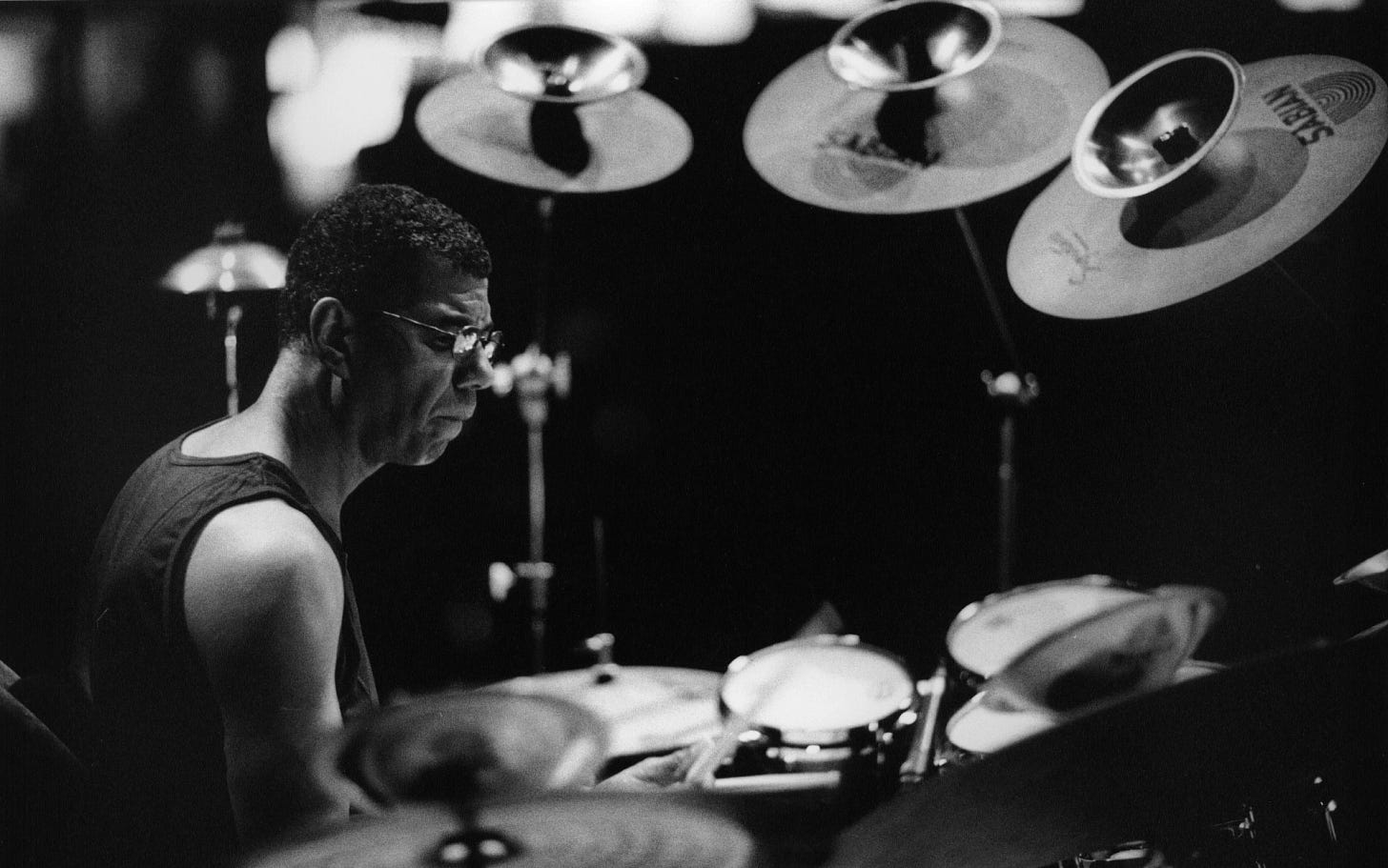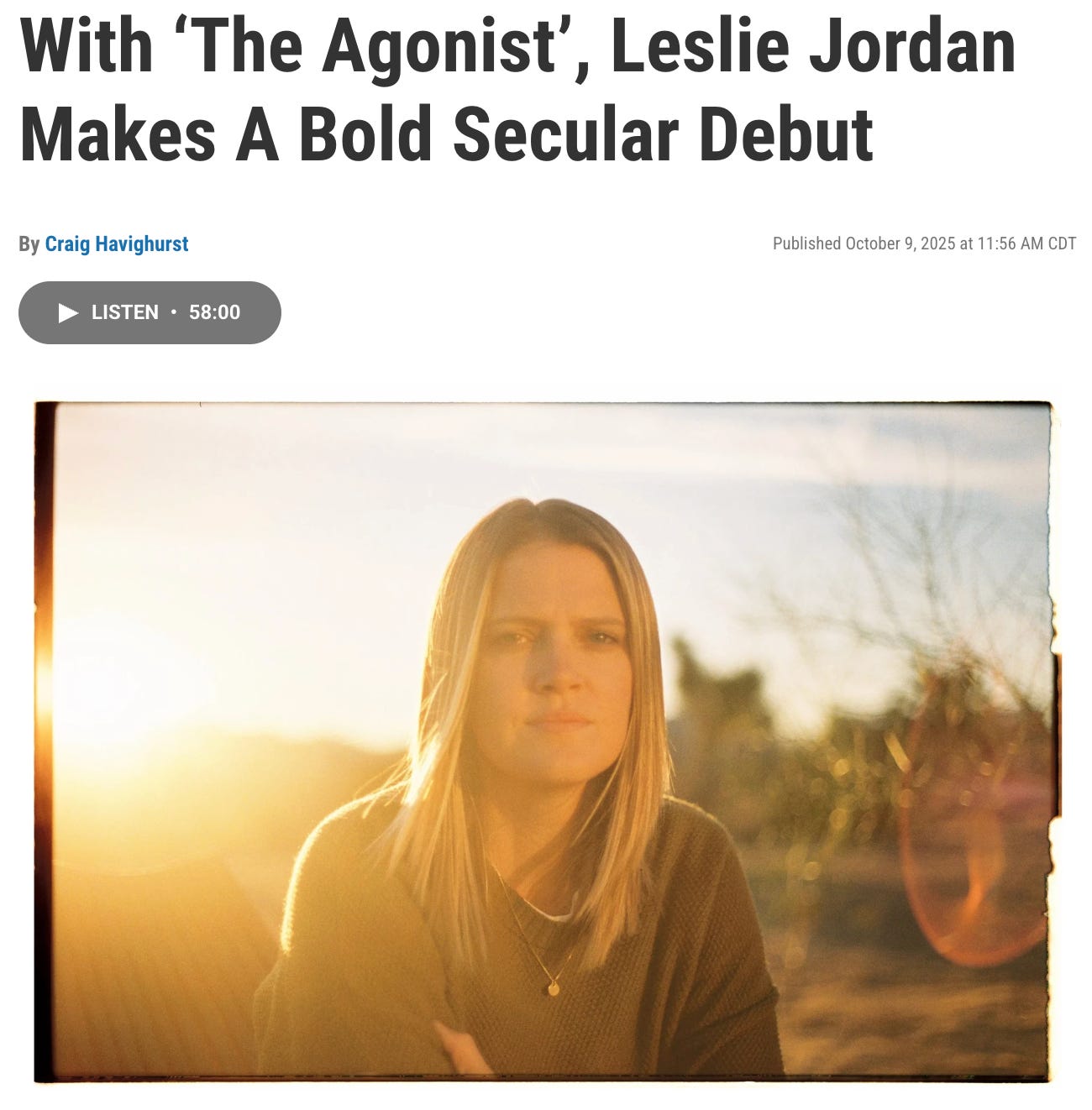String Theories
Jack DeJohnette (1942-2025) - And Other Highly Musical Humans
Ever since I had my adolescent mind blown by the Buddy Rich Big Band back in Durham, NC, I’ve paid special attention to drummers, especially in jazz. I regard taking about a year of drum lessons in high school as one of the key building blocks of my musical knowledge. So I got the signal way back that outside of rock and pop (and sometimes in pop and rock) drummers are more than mere time-keepers and support players. They are musical artists who play a critical role in not only the time but the texture of good music. I’ve found myself focusing more and more on this aspect of music with time, and in the past ten years, Jack DeJohnette became my favorite living drummer. Alas, I can’t say that anymore. His death at the age of 83 on Oct. 26 came as quite a shock. New titles with his name on the sessions are still coming out! He must have declined rather fast. Last weekend I finally had time to sit with his memory and revisit my favorite recordings.
I wanted to start with something I owned on a record, so I pulled Joe Henderson’s brilliant 1969 album Power To The People with Herbie Hancock (my Mozart) on electric piano and Ron Carter on electric bass. It’s a modern album, a classic of that year’s art-funk-fusion movement. “Afro-Centric” is magic and a perfect example of Jack DeJohnette’s artistry.
He’s not marking the music’s pulse as much as remarking on it - and coloring it. Jack, like his most commonly cited stylistic forerunners Elvin Jones and Tony Williams, was a bold and busy player, an assertive voice in the improvisational swirl. He introduced ideas through percussive timbres that fit together like a Swiss watch. He sometimes called him a sonic painter with an “elastic” sense of time. I feel all four of his limbs, utterly independent of one another, under the mind of one genius, playing four separate but complementary parts on a variety of instruments - bass drum, snare drum, hi-hat, many toms, and many cymbals. He’s as selective as he is expressive. He was very particular about the tuning of his drums and the voices of his cymbals, and each one gave him many different possible syllables, which he turned into soliloquies.
DeJohnette grew up in Chicago playing piano (which he’d continue his whole life) and then drums. He got involved in the avant-garde early, playing gigs as a young man with the surreal and spiritual Sun Ra Arkestra. When Jack moved to New York at 23, he joined up with sax player Charles Lloyd for a stretch, raising his profile considerably. He’d soon catch the ear of the notoriously particular Miles Davis, who hired him to replace Tony Williams just as Davis was getting set to make the sea-change 1970 epic Bitches Brew. And while that great album was edited together from a stretch of free jam sessions, there’s no mistaking the ferocious, in-the-moment playing of Jack DeJohnette on the live albums that followed with that material - from the Isle of Wight, the Fillmore, and other places. Jack was to me the most interesting drummer of the jazz/rock/funk fusion era.
He had such a varied career after that. One of his most famous regular gigs was with pianist Keith Jarrett, who is wonderful but not among my personal favorites. Whereas I go back all the time to the albums Jack made as the trio Gateway with the awesome bass player Dave Holland (the Englishman who was brand new in the US when he was also part of Bitches Brew) and guitarist John Abercrombie. They made records in the 1970s and again in the 90s that are a near perfect fit for my inclinations.
Jack also played here and there with Pat Metheny, a genius guitarist whose silkier, more Americana kind of flow brought out different colors in Jack’s playing. I pulled out my copy of their ECM album 80/81, a reference to the years it was recorded and released, with saxophone players Dewey Redman and Michael Brecker and bassist Charlie Haden. Jack’s drumming is so beautifully supportive on the long pair of “Folk Songs” by Metheny and Haden, and he gets a rich and rolling solo somewhere in the middle of it all. (Heads up that this is a long, one-chord jam that will wear some people out with its intensity; the drum solo starts at 10:20.)
Jack, I’ve noticed, tends to evoke a certain favorite word of mine in some of the many attempts to capture his essence over the years. Writing for AllMusic.com, Chris Kelsey wrote that Jack “possessed a comprehensive musicality rare among jazz drummers” (emphasis mine). And as I note in Chapter 13 of my book, drummers have been overlooked, joked about, and generally been treated (by some, not by all) as interchangeable parts in the musical engine. Not so, and nobody evoked a more personal voice and intra-band spirit than Jack DeJohnette.
Other albums I’d suggest include the unique Camp Meeting, where pianist/songwriter Bruce Hornsby shows his depth and range, playing with Jack and the great bass player Christian McBride. I also love the poetic HUDSON, inspired by Jack’s New York home region, on which he makes beautiful grooving music with bass player Larry Grenadier, guitarist John Scofield, and exploratory keyboard player John Medeski. (Their instrumental take on Joni Mitchell’s “Woodstock” is one of my audiophile test tracks, largely because of Jack’s drums.) Sound Travels, pictured above, from 2012, shows Jack leaning into the pure sonics of percussion on one of his most spiritual releases. And of course, you need to reckon at some point in your life with Bitches Brew. I haven’t yet pulled down my big special box set of the masterpiece since Jack’s passing. For me it’s a scriptural album that I turn to every year or so. With baseball season over and winter coming on, it’s only a matter of time.
What are Highly Musical Humans?
Jack DeJohnette was certainly a Highly Musical Human, but for those of you who have not yet perused my book or its table of contents, you will not have come across this new concept/meme/honorific, which I totally made up this year. As I revised and polished Musicality For Modern Humans, I found that I was exploring and explaining broad concepts with a few select illustrations more than teaching from specific examples. So it’s not a history of music that teaches through canonical artists, like so many music appreciation books. Therefore, I thought that my readers might have the question: Who in the heck am I supposed to listen to? What’s your idea of artists and records that embrace these values you’re writing about? So I came up with the idea of six interludes that profile, in about 800 words, certain artists I think you might love if you give them some time. Here’s how I introduce the Highly Musical Humans thing in the first chapter:
“They are under 55 years old at the time of publication, because I want to encourage you to know more about and support mid-career musicians from our contemporary scene. They are American, or in one case a Canadian playing an American tradition, not because America corners the market on great music, but because American music is my field of expertise and because I want us Americans to know and be proud of our multifaceted musical heritage. Finally, they are personal favorites, artists I listen to frequently who I wish were better known, even while some of them are certainly famous in their field.”
I don’t want to tell you who I selected for the book here. I hope you’ll seek that out on your own! As time goes on though, I’m going to profile more Highly Musical Humans here and on my social channels. There are SO MANY. You may well be one! Who would you nominate?
The Launch Of Musicality

Thanks so much to the folks who came and made a nice overflow crowd at my Southern Festival Of Books presentation on Oct. 19. It was my first chance to tell an audience about the book’s vision, and I decided to offer an outline of its six parts, defining the arc of the journey that readers will take. I do the same in a much more abbreviated way on my new Facebook Author Page, which is just kind of a necessary evil so I can run ads to target audiences. Also new is the video of my livestream on Oct. 12 when I talked through the 95-song Musicality companion playlist, describing how most of the tracks there line up with the book’s ideas and chapters. It’s an hour long, but I think it will provoke you to go listen to some new stuff! If you have ideas for partnerships, venues, book clubs, lectures, etc. I’m all ears, so to speak.
NEW WORK
The best albums in Americana of 2025 so far have come as little surprise. I knew the artists - I’m With Her, Margo Price, Jason Isbell, etc. - and what they were capable of. Leslie Jordan’s The Agonist was a left-field exception. I didn’t know her, but her collaborators here, including Kenneth Pattengale and Joachim Cooder, told me something was up. I loved it on first listen and it’s only grown on me. It’s my sleeper pick of the year, and Leslie is a fascinating conversation.
As usual, click the headline/illustration to go to the full story.
Though we’re from very nearby home towns, I’d never had a chance to talk to Tift Merritt about the North Carolina music scene where she honed her craft before getting signed to Lost Highway Records for a 2002 debut. Now I’ve checked that box, and it was a treat to visit with a woman who’s pursued so many intellectual avenues in the years since her busiest touring and recording. We visited by Zoom from her home in Raleigh and talked about the surprising dark sides of her major label journey and her reissue of her breakout album Tambourine, along with a set of unreleased demo tapes from that era.
This month seems to have been devoted to profiling women, which works for me - just how it shook out. And here is Meredith DiMenna. She is a recording and performing artist, but this is about her other side - managing the magic at Analog, one of Nashville’s nicest places to see a show. I’m a regular, and I learned a lot!





